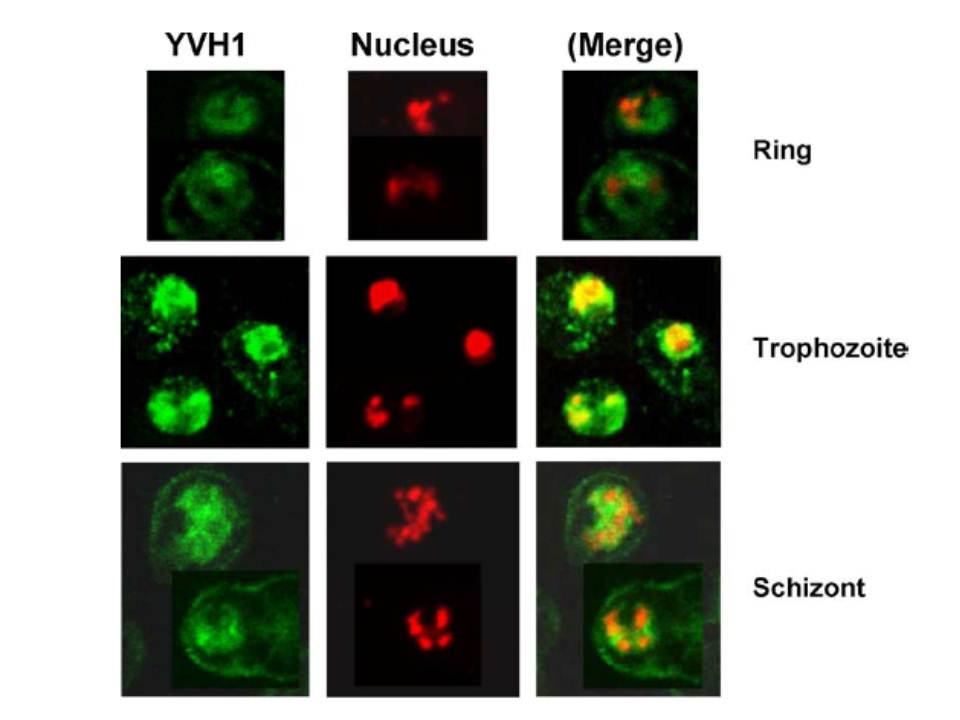Nucleocytoplasmic shuttling of PfYVH1 during parasite development. Stages of parasite growth are indicated on the right. YVH1 (green; left panels) was detected with the peptide antibody described under Section 2, followed by FITC-conjugated secondary antibody. Nucleus (red; center panels) was stained with TO-PRO-3 iodide. The right panels (Merge) are superimpositions of the left and the center panels, showing the intracellular location of YVH1 relative to the nucleus. Note the relatively more orange color in the trophozoite merge, demonstrating a greater amount of YVH1 in the nucleus. PfYVH1 is almost exclusively cytoplasmic in the ring stage parasite. As the rings progressed to trophozoites, the nucleus acquired substantial amounts of the protein. Upon further progression of the parasite to the schizont stage, the nuclear PfYVH1 appeared to return to the cytoplasm, thus completing the nucleocytoplasmic cycle.
Kumar R, Musiyenko A, Cioffi E, Oldenburg A, Adams B, Bitko V, Krishna SS, Barik S. A zinc-binding dual-specificity YVH1 phosphatase in the malaria parasite, Plasmodium falciparum, and its interaction with the nuclear protein, pescadillo. Mol Biochem Parasitol. 2004 133:297-310. Copyright Elsevier
